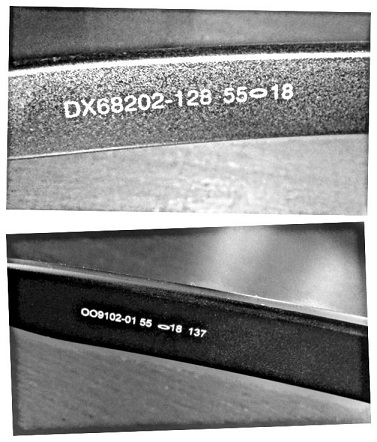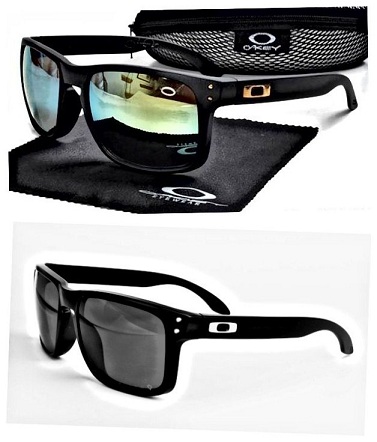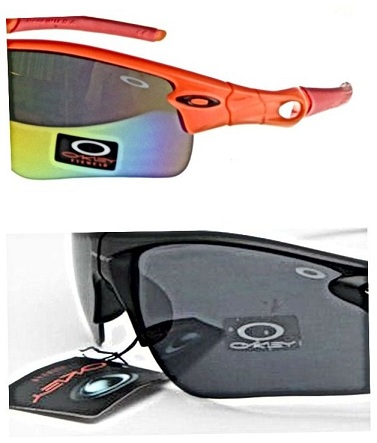You Can Tell Real Oakleys From Fake Oakleys By These Details
The quality of the knockoff Fake Oakleys will get better. And they will be all over the internet. So how do you know that the Oakley you’re buying isn’t a high-fashion Oakley? Please note the following.
Table of Contents
1. price
A pair of real Oakley sunglasses will usually cost at least $50.00 and that is if they are used, old and probably worse for wear. Out of the box brand new ones are likely to be in the $80-$100+ range at least. Admittedly, it does depend on the model number (and whether the seller is honestly wearing sunglasses). It’s always a good thing to check the frames against retail prices and other frames in the same condition. If you still decide to do so, here are some other identifiers to look out for.
2. Markings on the lens
For limited editions such as the Tour de France, MLB or Ferrari models, some Oakley lenses will have something other than “polarized” or “Pritz” on the etch film. You can also get some custom etchings from Oakley. Some goggles, such as those used in M frames, will have “Oakley” etched into the top of the nose, above the bridge. However, if the Oakley icon (a round O or square O icon) is printed on the lens, they are replica Oakley sunglasses.
Oakley will not place icons on standard non-prescription lenses, nor will they print on lenses; any markings will be etched. If you see paint on a lens, travel in the other direction.
Please note that this applies to non-prescription lenses. Genuine Oakley prescription lenses may have the Oakley “O” etched into the lower corner of the lens. Bulletproof and industrial lenses will also have a small “O” etched into the lens.
3. BOGUS SKU

SKU (pronounced “sk-yew”) is a logo, usually alphanumeric. In the older Oakley, the SKU is usually a sequence of 2 numbers, a dash and 3 digits. An example SKU for a pair and a half jacket is 03-609.
The newer versions are longer and begin with a double “O” (letter, not zero). Four numbers, a “-“, plus two more numbers. An example is the Tron Legacy Gascans, which has a SKU of OO9143-03.
There are some exceptions, as some Asian Fit models will use the same format of the 5-number sequence (i.e. 03-609) and then add the “J” at the end.
If you see an SKU with random letters or a longer string of numbers than the one identified above, it may be a counterfeit product. It’s a good idea to plug your SKU into a search engine and see what pops up. Some counterfeiters are putting real Oakley SKUs on their replicas, but those real SKUs rarely match the models they’re printing. For example, if you buy a pair of Holbrooks but one of the SKUs gives search results for Straight Jackets, you probably have some fake Oakley on your hands.
On used models, the SKU may have expired, so don’t be too alarmed if you don’t have one – unless the seller claims they are new, and then you may want to reconsider your purchase as a new Oakley should still have an SKU. On online models, sometimes the SKU is located under the ear cups.
4. shredded topcoat
Many of Oakley’s plastic frames are made from pre-dyed plastic, which means that the plastic pellets used to form the sunglasses are infused with dye so that the plastic is the same color throughout. If the frame is to be folded in half, the interior color of the plastic should be the same as the exterior color. This is not true of all Oakley’s, especially those with designs or metal frames. Those that are painted have a high quality coating that should withstand normal wear and tear for some time.
Forgeries are usually painted and lack the heavy duty outer coating to seal it. If you fold the stem and look at the hinge area, you may notice a color difference. Also, the paint often chips, scratches or peels easily.
5. Logo Location

Many counterfeiters slap “Oakley” on the frame and call it good – not caring if their fake model actually has the Oakley logo in the same spot. This is especially common on the bridge of the nose. If the Oakley website doesn’t have “Oakley” on the bridge of the nose, and you do have “Oakley” on the bridge of the nose, then you have a fake. Lifestyle frames such as Holbrooks and Frogskins are popular imitations, and fakes often come with misplaced logos.
6. Frame materials
There are several styles of sunglasses available in a variety of frame materials. For example, the Jupiter line has metallic Jupiter carbon and plastic Jupiter squared. These frames have the same shape, so if you use a metal Jupiter, it does not necessarily mean it is fake. You can read more about identifying Oakley Jupiters. However, some styles are only available in one material. If you come across a pair of metal extractors, they are 100% fake Oakley. If you come across a pair of plastic Juliets, they are also not real.
7. Rising Seas
Knockoff Oakleys often have an imperfect finish and the plastic frame may have raised lines during the molding process. On a genuine Oakley, this seam is almost imperceptible. You can pick it out with your eyes, but if you slide your finger along it, you won’t be able to feel it.
8. Stickers

The latest Oakley glasses with polarized lenses will come with a programmed “P” for static attachment. But they’ll never have the sticky, self-adhesive label that leaves a residue when it’s pulled off.
9. Never made by Oakley
It seems pretty basic, but not everyone knows Oakley’s entire lineup. They see a pair of sunglasses they like, see it with the Oakley logo, and assume it’s real. Stubborn Oakley fans who like to participate in frequent forums call it a style, especially “Fandango.” Oakley has some very interesting sunglass styles, but if you think the styles there are too small, do an image search and see what happens. If they don’t appear on any legitimate site, they are fakes.
10.Made in the USA
“Made in the USA” stamps used to be an indicator as to whether you were dealing with a real pair of Oakleys or some fakes. This is no longer the case, as not all Oakley sunglasses are made in the United States.
Leave a Reply